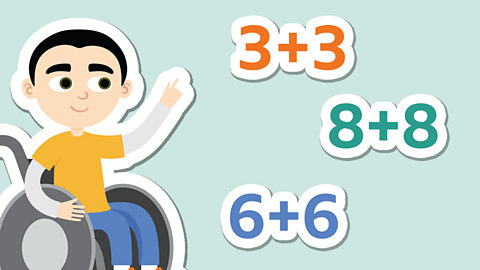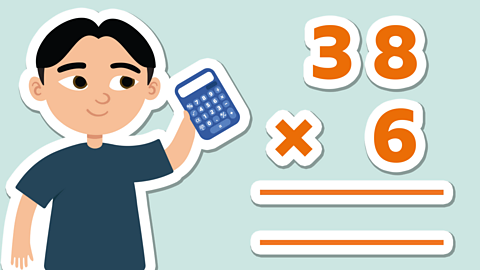Multiplying by 1
When you multiply by 1, the answer stays the same.
For example:
1 Ă— 21 = 21 or 21 Ă— 1 = 21
You can think of it as 21 lots of 1 or 1 lot of 21. They both equal 21.
1 Ă— a number = that number or a number Ă— 1 = that number.
This works with any number, including big, small or negative numbers!
For example:
- 1 Ă— 20,000 = 20,000
- 1 Ă— 2 = 2
- 1 Ă— -2 = -2
A common mistake is to think that 1 Ă— 1 = 2.
1 plus 1 is 2, but 1 times 1 is 1.
1 Ă— 1 = 1
Dividing by 1
When you divide by 1 the answer also stays the same!
For example:
21 Ă· 1 = 21
Think of it as if you had to divide 21 into groups of 1. You would get 21 groups.
Or imagine sharing 21 carrots with 1 bear. The bear would get all 21 carrots.

That works with any number, including big, small or negative numbers!
For example:
- 20,000 Ă· 1 = 20,000
- 21 Ă· 1 = 21
- -2 Ă· 1 = -2
What do you think 1 Ă· 1 will be?
When you divide a number by 1, the answer is the number you started with.
1 Ă· 1 = 1
Multiplying by 0
Multiplying by 0 always gives the answer 0. Whether you do 0 Ă— or Ă— 0, it will equal 0. For example:
21 Ă— 0 = 0
Think of it as 21 lots of 0 or 21 lots of nothing.You could see it as adding 0 twenty-one times.This is why it will always equal 0.
0 Ă— a number = 0 or a number Ă— 0 = 0
This makes the 0 times table simple!
Activity
Quiz
Have a go at this quiz to show your understanding of multiplying and dividing by 0 and 1.
NEW! Play Guardians: Defenders of Mathematica - the Halloween update. gameNEW! Play Guardians: Defenders of Mathematica - the Halloween update
Experience Mathematica as you’ve never seen it before, with all-new backgrounds and costumes for Halloween. Available for a limited time only. Use your maths skills to save the day before it's too late!

More on Multiplying and dividing
Find out more by working through a topic
- count19 of 36

- count20 of 36

- count21 of 36

- count22 of 36
